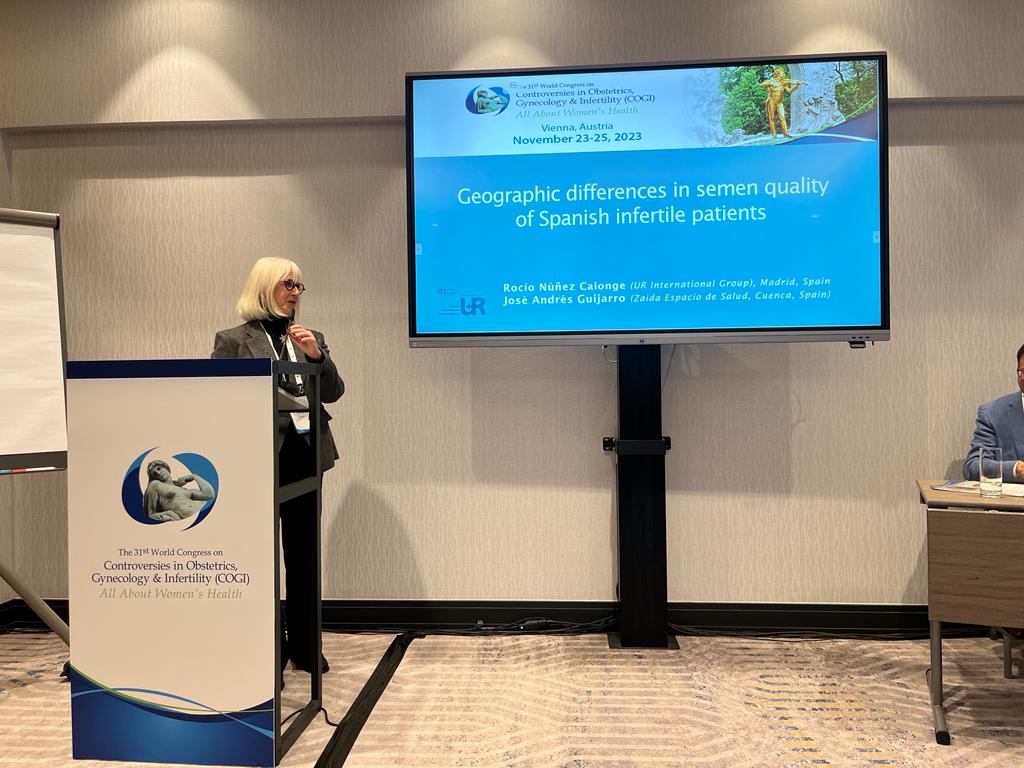Se presentó el siguiente trabajo como comunicación oral:
Geographic differences in semen quality of Spanish infertile patients

Introduction
Several studies have been published regarding the correlation between the subject’s geographical location and their semen quality. The main limitations of these studies include differences in protocol across laboratories, which may affect the validity of data.
The objective of this study was to determine whether there are variations in the seminal parameters of patients undergoing a sterility study in eleven different geographical locations in Spain.
Methods
The study was carried out in 11 assisted reproduction units belonging to the same group. A total of 872 semen samples from men who came to perform a semen analysis for a fertility study were analyzed, which included: volume, sperm concentration, and total and active motility. Semen parameters were assessed using standardized methodology with inter-laboratory quality control.
At the time of analysis, all the men had a sexual abstinence between 2 and 5 days. The mean age of the patients was 38 years (SD: 6.14). There were no significant differences regarding age between the different centers (ANOVA p>0.05). Volume, sperm concentration, motility and the total number of motile sperm (TMS): volume x sperm concentration x percentage of motility were compared according to
geographic locations.
Analysis of variance (ANOVA) was performed for the comparison between centers of the means of the values of each parameter and the Chi-square test to compare the percentage of abnormal or pathological diagnoses according to the WHO parameters.
Results
Statistically significant differences were found between the different centers regarding volume, sperm concentration, total motility and TMS (p: 0.020, 0.004, 0.000 and 0.008 respectively). Men from Asturias had the highest proportion of volume, sperm concentration, motile spermatozoa and TMS with statistically significant differences with respect to the rest, followed by patients from Cataluña, Almeria and Malaga.
Lowest sperm concentration and TMS were detected for men from Granada, Alicante and Madrid.
Conclusions
Since the determination of the different parameters has been carried out with the same methodology, the differences in semen quality cannot be due to variations between laboratories.
The causes of geographical differences in human semen quality observed are most likely the result of a combination of various types of environmental factors.


